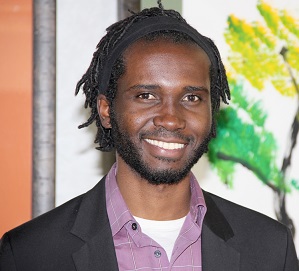Microbiome, mETabolites, and Alcohol in HIV to reduce CVD Cohort (META HIV CVD Cohort)
The META HIV CVD Cohort is a prospective observational study that will use existing data and biospecimens from the Veterans Aging Cohort Study (VACS) to determine the association between alcohol use and microbiome-dependent metabolites, assess the relationships among these metabolites and gut permeability, microbial translocation, inflammation, altered innate and adaptive immune function, and subclinical cardiovascular disease (CVD), and to evaluate how these metabolites contribute to CVD risk and death among people with and without HIV. The study has the following aims:
- Assess short chain fatty acid (SCFA) metabolic pathways focusing primarily on butyrate. We hypothesize that a) heavy drinking is associated with lower SCFAs; and lower SCFAs are associated with b) more gut permeability and microbial translocation, fewer regulatory T-cells, and more inflammatory TH17 cells; c) CVD; and d) death.
- Assess choline metabolic pathways focusing primarily on TMAO. We hypothesize that a) heavy drinking is associated with higher TMAO; and higher TMAO is associated with b) atherogenic lipid profiles c) CVD and d) death.
- Assess bile acid metabolic pathways focusing on deoxycholic acid to cholic acid ratio. We hypothesize that a) heavy drinking is associated with higher deconjugated or secondary bile acids (DSBAs); higher DSBAs are associated with b) atherogenic lipid profiles and gut permeability; c) CVD and d) death.
- Replicate the associations of heavy drinking and these metabolites with baseline data from Project 1.

Dr. Kaku So-Armah, who is leading this project, explains: “In a previous project, we looked at Trimethylamine N-oxide (TMAO), which set the foundation that allowed us to think about the microbiome within the context of HIV and alcohol. Unhealthy alcohol consumption and HIV infection are independently linked to heart disease, so people with HIV (PWH) who drink heavily are at very high risk for heart disease. Alcohol changes the gut bacteria (called the microbiome) which in turn changes their breakdown products, decreasing beneficial products and increasing harmful ones. This study will test whether alcohol’s effects on the gut bacteria and the resulting changes in breakdown products contribute to heart disease in PWH who drink heavily.”
Dr. Samuel Mensah, who is assisting Dr. So-Armah in the implementation of this project led the TMAO analyses that served as a building block for this work. Please see additional information on this analysis below:
The primary exposure for the TMAO study was heavy drinking days, categorized into quartiles. Participants in the lowest quartile had 0-6 heavy drinking days, those in the second quartile had 7-8 heavy drinking days, the third quartile had 9-12 heavy drinking days, and the fourth quartile had 13-30 heavy drinking days. The primary outcome was plasma TMAO, modeled as a natural log transformed continuous variable.
In the multiple linear regression, we did not detect a significant difference between mean of plasma TMAO in persons within the second, third, and fourth quartiles as individually compared to the first/lowest quartile (n=218, ratio of means (95% CI): 1.37(0.98,1.93), 1.14(0.80,1.62) and 1.18(0.84,1.67), respectively [p=0.334]).
In the sensitivity analysis, the individual addition of probiotics and the different categories of food groups (beef, processed meat, fish, eggs, yogurt with active culture, fruit, green vegetables, other vegetables) to the adjusted model did not change the association between heavy drinking days and plasma TMAO by more than 10%.
Spotlight on Dr. Samuel Mensah

Dr. Mensah was interviewed by Asri Mumpuni. He serves as a project coordinator for Project 2, titled Microbiome, mETabolites, and Alcohol in HIV to reduce CVD Cohort (META HIV CVD Cohort).
Do you have anything else to add to the TMAO findings above?
For Aim 2, we are looking at how TMAO is associated with subclinical heart failure, which is measured by Echo. TMAO is a molecule that has been found to play a role in clogging up blood vessels. We are trying to find out whether it is associated with heart failure, or the beginning of heart failure. Usually for younger people, we are not going to find very overt clinical disease. But we want to find out whether TMAO is associated with subclinical heart failure and be able to characterize that subclinical heart failure. It is contributing to the P01 by identifying areas where we could intervene.
Tell us more about your academic and research background. What led you to work on cardiovascular disease (CVD) in people living with HIV infection, and further focus on heavy drinking and the gut?
Prior to this, I had a medical school education from the University of Ghana in Accra and graduated in 2014. I worked as a general practitioner for a few years prior to coming to the US to pursue an MPH where I concentrated in biostatistics and epidemiology. Since I was in school while I started working with this team, I was able to apply the things I was learning in class to these analyses and the papers that I was working on with Kaku. I did have some experience as a physician in Ghana working with PWH, and also worked with patients with CVD, but not necessarily combined. It is interesting to know now that HIV and CVD are linked.
What has your experience been during this early stage of starting out the project? Are there any lessons learned you would like to share?

There has been a lot of paperwork that I did not know about prior to starting this project, such as all of the details involved in writing a protocol. As a physician or even researcher, we think about getting results and analyzing those results. But a lot of what I am learning now is how to get the study off the ground, like what is needed in an IRB application. That has been a learning curve for me. Some lessons I have learned have been to be quick and pay attention to details. If in a 20 or 30 page document, there is one thing out of place, it could cause problems. I am doing lots of things that I didn’t know anything about. With the help of Grace Wallace and Emily Smith from the admin core, I have been able to help put those things together.
What is one thing about you that readers might find surprising?
I like to dance, though I don’t feel like I know how to do it! I also enjoy taking photographs of nice architecture. I have an Instagram collection of buildings with interesting architecture.